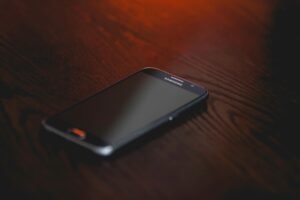EMS as a recovery method
They tell us about all the benefits of electrostimulation , but many times they forget that one of the uses that can be given to this technique is to help recovery. Has it ever occurred to you that you can go to your FAST center closest to recovering from your hard workouts or sports sessions?
Are you one of those who give everything on the mountain on weekends and on Monday you’re dead? Why don’t you go to FAST on Mondays and do a regenerative session with our coaches?
In 2004 an investigation concluded that “an EMS program applied after maximal eccentric exercise has no impact on the magnitude of the initial muscle damage, but shows a tendency to slightly delay the onset of muscle damage, reflected by the reduction in creatine kinase , probably through the induction of a hyperperfusion that washes the muscle of cellular debris, and therefore decreases the inflammatory response ”(Vanderthommen et al., 2004).
Ten years later, the effects of an active recovery (pedaling at very light intensity), passive and low-frequency electrostimulation on the twins were compared. Before and after this recovery, the Yo-Yo test was performed. In the post-test, the best results were obtained when using EMS , followed by active recovery, and finally passive recovery (Bieuzen et al., 2014).
Other studies that have investigated different types of recovery after an isometric (Vanderthommen et al., 2010) or concentric (Froyd et al., 2014) maximal force effort have found no differences between active, passive or electrostimulation recovery. However, Zarrouk et al. (2011) concluded that “electromyostimulation was an effective recovery tool for reducing neuromuscular fatigue after high intensity training, specifically composed of isokinetic concentric exercises for the knee extensor muscles”.
Borne et al. Went further and combined low-frequency electrostimulation with a cold vest for recovery in high-performance kayak athletes (Borne et al., 2015). In order to know that the effect was of electrostimulation, the effects of a cold vest with EMS and another without EMS were compared. The results were significantly better in recovery than those who used EMS.
Although there is still much more research to be added to the scientific body of these investigations, all this seems to indicate that depending on the type of stimulus / training, one recovery strategy or another should be used. In addition, it must be taken into account if it is necessary to perform later or not, since in that case the recovery should have an activation component.
FAST programs can be tailored to your needs, so don’t hesitate to put your hands on our coaches to recover from fatigue and get back to performing in your favorite sport.
References:
Bieuzen et al. Positive effect of speci? C low-frequency electrical stimulation during short-term recovery on subsequent high-intensity exercise.ApplPhysiolNutrMetab.
Vanderthommen et al. Does neuromuscular electrical stimulation in? Uence muscle recovery after maximal isokinetic exercise? Isokinetics and Exercise Science.
Vanderthommen et al. Comparison of active and electrostimulated recovery strategies after fatiguing exercise.
Froyd et al. Potentiation and Electrical Stimulus Frequency During Self-Paced Exercise and Recovery.
Zarrouk et al. Comparison of Recovery Strategies on Maximal Force-Generating Capacity and Electromyographic Activity Level of the Knee Extensor Muscles.
Borne et al. Low-frequency electrical stimulation combined with a cooling vest improves recovery of elite kayakers following a simulated 1000-m race in a hot environment. Scand J MedSciSports.




















+ There are no comments
Add yours